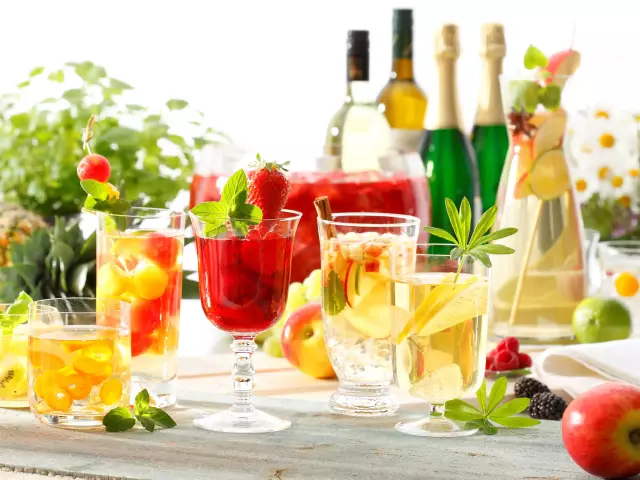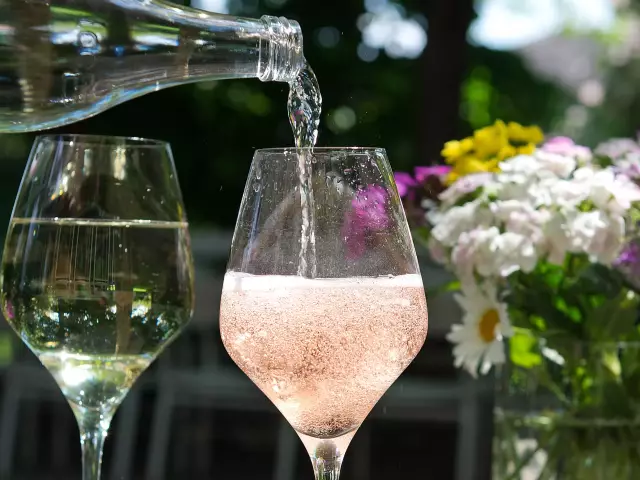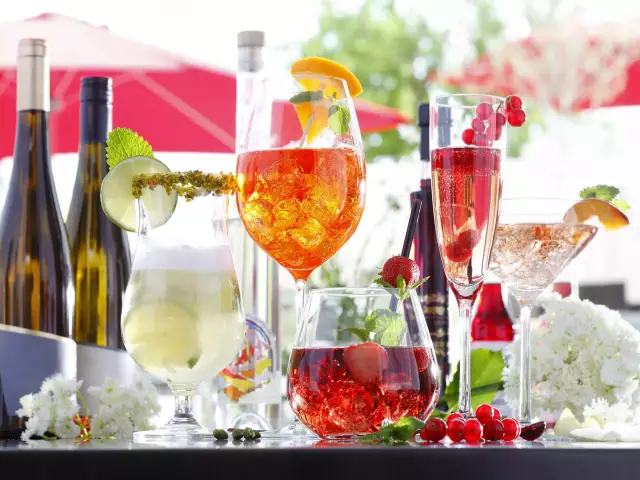Secco

Secco can be a light alternative to sparkling wine whenever you feel like celebrating with others.
Facts
-
6 - 8° degrees
are ideal drinking temperatures
-
< 35 g/l
of residual sugar is considered as "dry"
-
1 - 2,5 bar
pressure
With relatively low alcohol, a Secco is recommended as an ideal summer aperitif, which does not put as much strain on the body even in hot temperatures. Served cool at around 6-8 ° C, it is particularly refreshing. Seccos are now part of the standard repertoire for many German winegrowers.
How is Secco different
According to German Wine Law, semi-sparkling wine is defined as wine which has an excess of carbon dioxide compared to still wines. While most of the CO2 escapes during the fermentation of grape must to wine, for the preparation of high-quality Seccos, this is captured and put back into the wine after fermentation.
If CO2 from sources other than the wine itself are added, then it must be declared as "semi-sparkling wine with added carbon dioxide." This carbonation method is only used in the simplest semi-sparkling wines. Seccos have only 1 to 2.5 bar pressure, while sparkling wine contains at least 3, and up to 6, bar of carbonic acid pressure. An important distinction between seccos and sekt, or sparkling wine, is that in the latter, the CO2 comes from a second fermentation.
Seccos don’t need to use a wire cage (muselet) over the cork, like with sparkling wine, but are mostly closed with either a screw cap or a cork with foil or string.
Levels of sweetness for semi-sparkling wines
Dry: up to 35 g / liter residual sugar content
Semi-dry: 33 - 50 g / liter residual sugar content
Mild: > 50 g / liter residual sugar
Is Secco the same as Prosecco?
No! Prosecco comes from Italy, is pressed from the Glera grape variety and may only be produced in the DOC Prosecco. It is available as sparkling, semi-sparkling and still wine. Meanwhile in Germany, Secco is a sparkling wine with technically added carbon dioxide.
Varietals

More recipe ideas
with goat's cheese Courgette and chanterelle salad
with goat's cheese
- 2 ganze Zucchini
- 3 EL Rapsöl
- 1 kleine Schalotte
- 300 Gramm Pfifferlinge
- 1 Msp. gemahlener Piment
- 2 Bund Rucola
- je 1/2 Bund Kerbel u. glatte Petersilie
- je 3 EL Walnuss- u. Rapsöl
- 4 Stück Ziegenkäse-Taler
- 1 Prise Zucker
- nach Belieben Salz & Pfeffer
Salad:
Wash the courgettes and slice thinly. Place in a bowl and mix with the oil.
Heat a grill pan and fry the courgettes in batches until golden brown. Season with salt and pepper, place in a bowl.
<p
<p>Peel and finely dice the shallot. Clean the chanterelles, wash if necessary and pat dry. Depending on size, cut in half if necessary.
<p
<p>Sauté the shallot in a pan until translucent. Add the chanterelles and fry vigorously for 3 minutes while stirring. Season with salt, pepper and allspice. Add to the courgettes. Wash the rocket and spin dry.
Dressing:
Wash the herbs, shake dry. Pluck the leaves, blend finely with both types of oil and vinegar in a blender or with a hand blender. Flavour with salt, pepper and sugar. Pour over the courgette and chanterelle mix and mix loosely with the rocket. Arrange on plates, sprinkle with goat's cheese.
- Pinot Blanc (trocken)
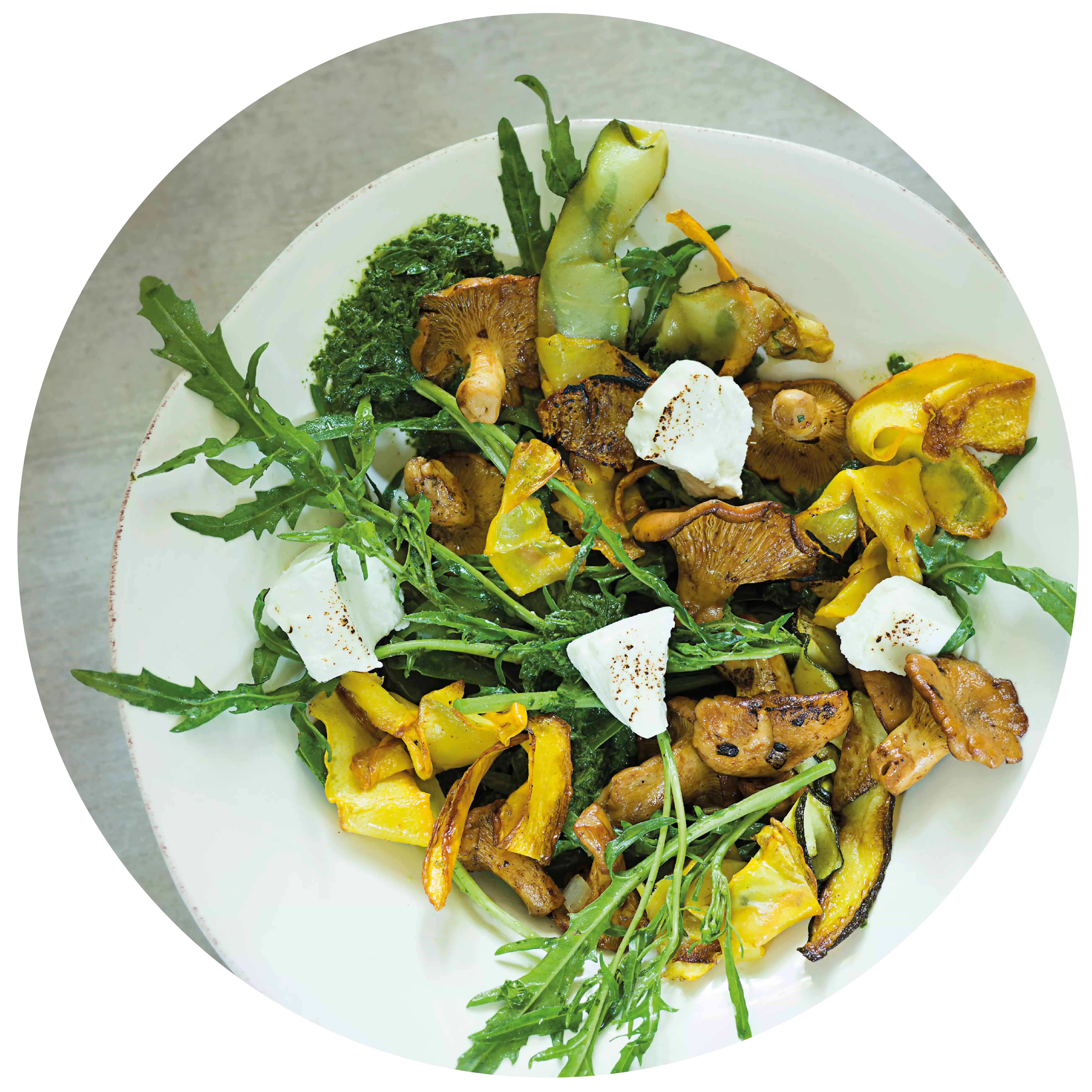
with pears, beans, parsley root and black walnuts Venison medallions
with pears, beans, parsley root and black walnuts
- 12 Stück Rehmedaillions (a 80g)
- 30 Gramm gebratene Speckstreifen
- 200 ml Bechamelsauce
- 3 EL Sonnenblumenöl
- 8 kleine Petersilienwurzeln mit Grün (alternativ Knollensellerie)
- 6 - 8 breite Schnippelbohnen
- 1 große Birne
- 4 - 6 schwarze Walnüsse
- 100 ml Wildfond
- 2 EL Butter
- 2 Stängel glatte Petersilie
- nach Geschmack Salz
Preheat the oven to 180 °C top and bottom heat. Clean, peel and trim the parsley roots. Clean the beans and cut into diagonal pieces. Blanch the parsley roots and beans separately in boiling salted water and rinse immediately in iced water.
Cut the walnuts into eighths and warm in the game stock. Wash the unpeeled pear, cut into eighths, remove the core and cut into thin slices. Fry the venison medallions on both sides in oil, then finish cooking in the oven for approx. 3 - 5 minutes.
In the meantime, toss the beans and parsley roots in melted butter and season with salt. Arrange the vegetables with the black walnuts and pear slices on large plates. Place the medallions on top, garnish with game stock, Béchamel sauce and bacon strips.
Tip: You can make your own black walnuts. To do this, prick the walnuts all over with a fork or skewer and place in water for 10 days. Change the water every day so that the tannic acid can drain off. Boil the nuts 3 times in salted water until they are deep black. Simmer with bay leaves and peppercorns for approx. 20 minutes until soft. Layer in preserving jars and cover with syrup. The nuts can be kept for approx. 1 year.
- Spätburgunder / Pinot Noir (trocken)
- Pinot Gris (trocken)
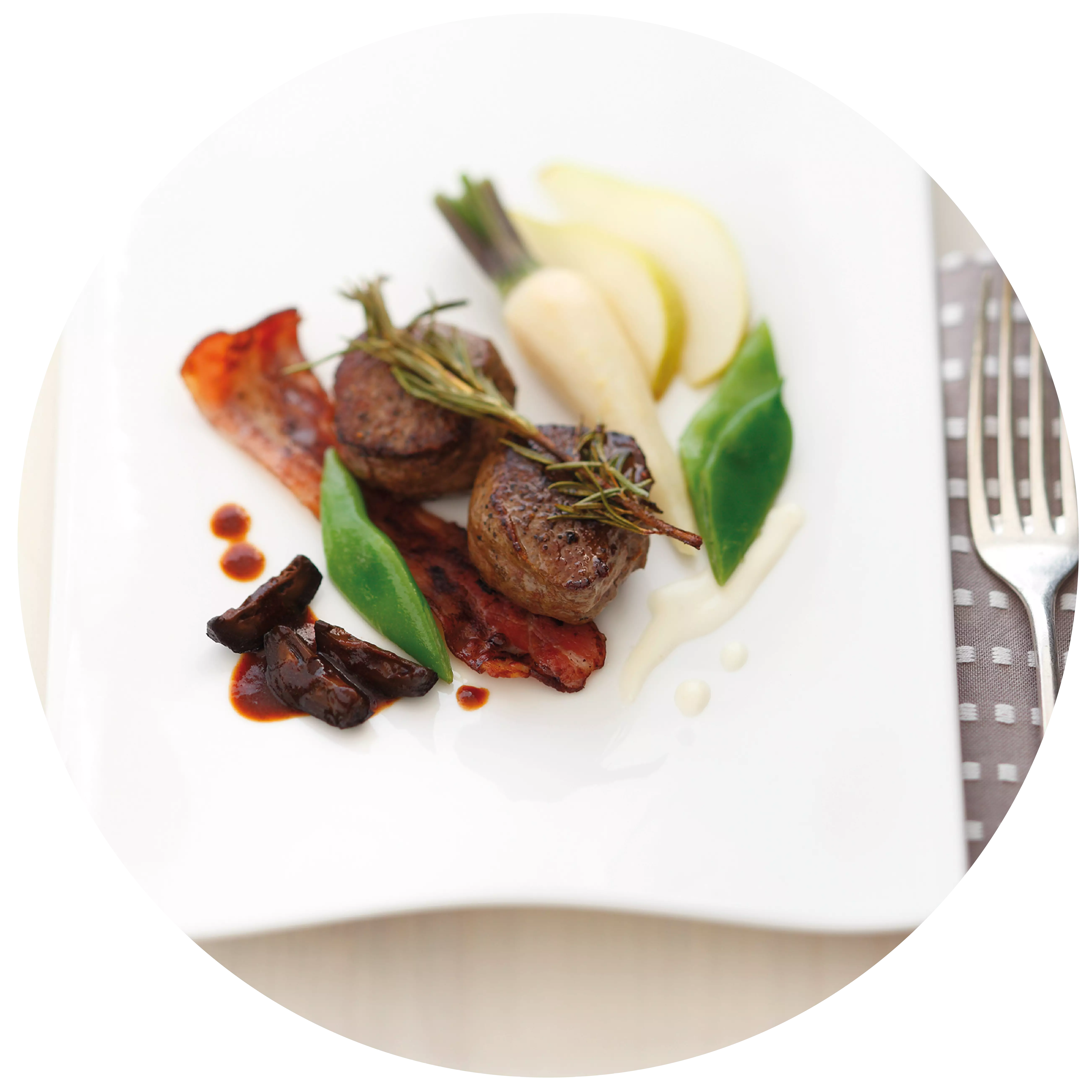
with semi-dry wines Flädlesuppe
with semi-dry wines
- 1 Bund Schnittlauch
- 1 Liter Fleischbrühe
- 150 Gramm Weizenmehl
- 300 ml Milch
- nach Belieben Speckschwarte zum ausreiben der Pflanne
- Etwas Salz
Make a smooth, not too thick batter from the flour, milk, eggs and a pinch of salt. Heat a heavy frying pan on a high heat, rub with bacon fat, pour in a small dollop of batter, allow to spread and fry thin pancakes (flädle).
<p
<p>Leave the pancakes to cool, halve and cut into thin strips.
Place in clear, very hot meat stock and serve immediately.
<p- Trollinger (halbtrocken & feinherb)
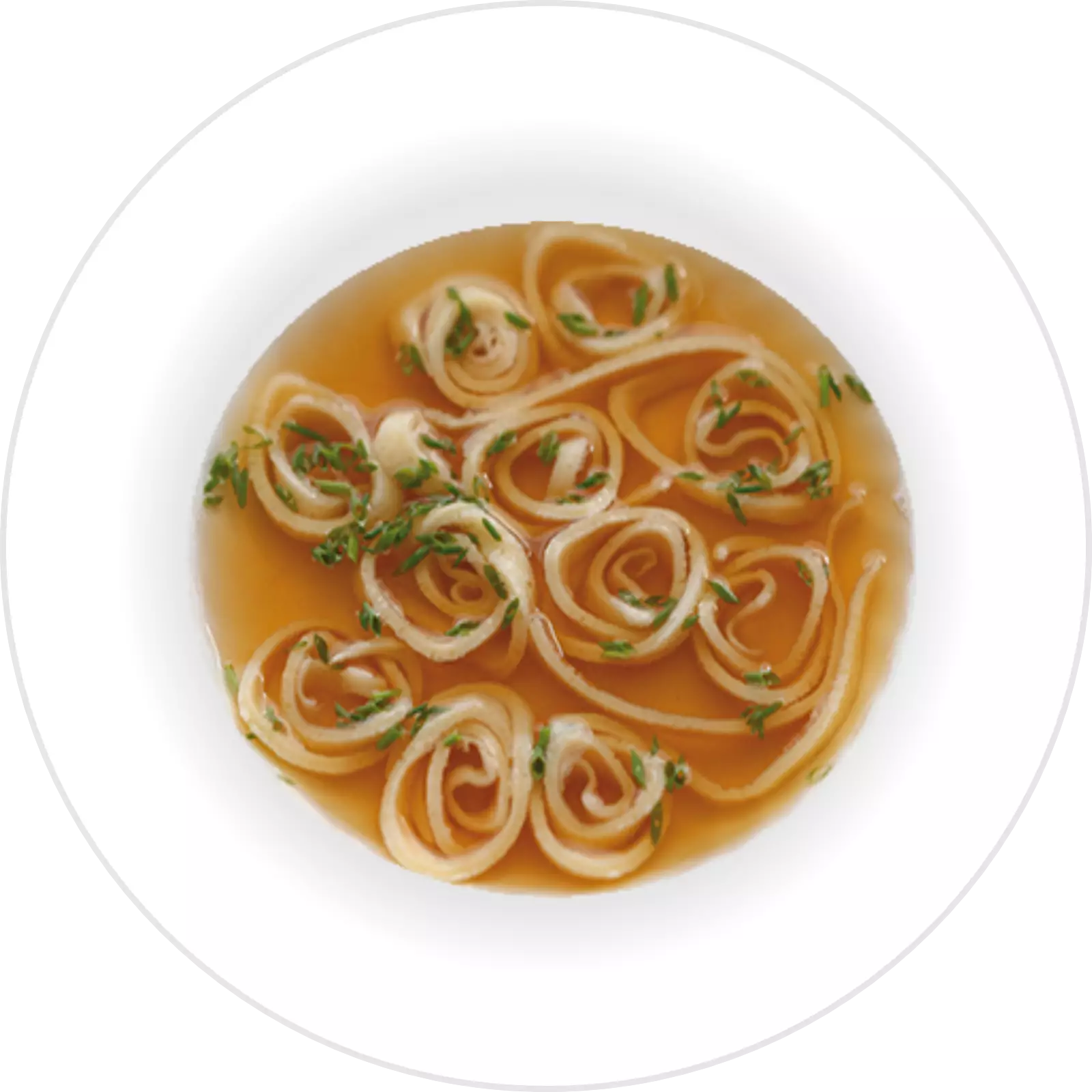
Light and fluffy: cashew coconut mousse with passion fruit Cashew coconut mousse with passion fruit
An airy cashew coconut mousse with passion fruit
- 400g Cashewkerne
- 400ml Haferdrink
- 6EL Agavendicksaft
- 6EL Kokosflocken
- 4 Passionsfrüchte
- 1 Prise Vanille
Place the cashews in a container and add enough water to cover the cashews sufficiently. Place the cashews in the fridge to soak overnight.
(With a high-performance blender, 3-4 hours is also sufficient.)
Drain the water and place the cashews in the blender with the oat milk, agave syrup and coconut flakes. Add the vanilla and blend until the mousse is creamy and no longer contains any chunks.
<p
<p>Divide the mousse between four glasses. Halve the passion fruit, scrape out the flesh with a teaspoon and place on top of the mousse. Decorate with coconut flakes.
- Pinot Blanc (süß & edelsüß)
- Riesling (süß & edelsüß)
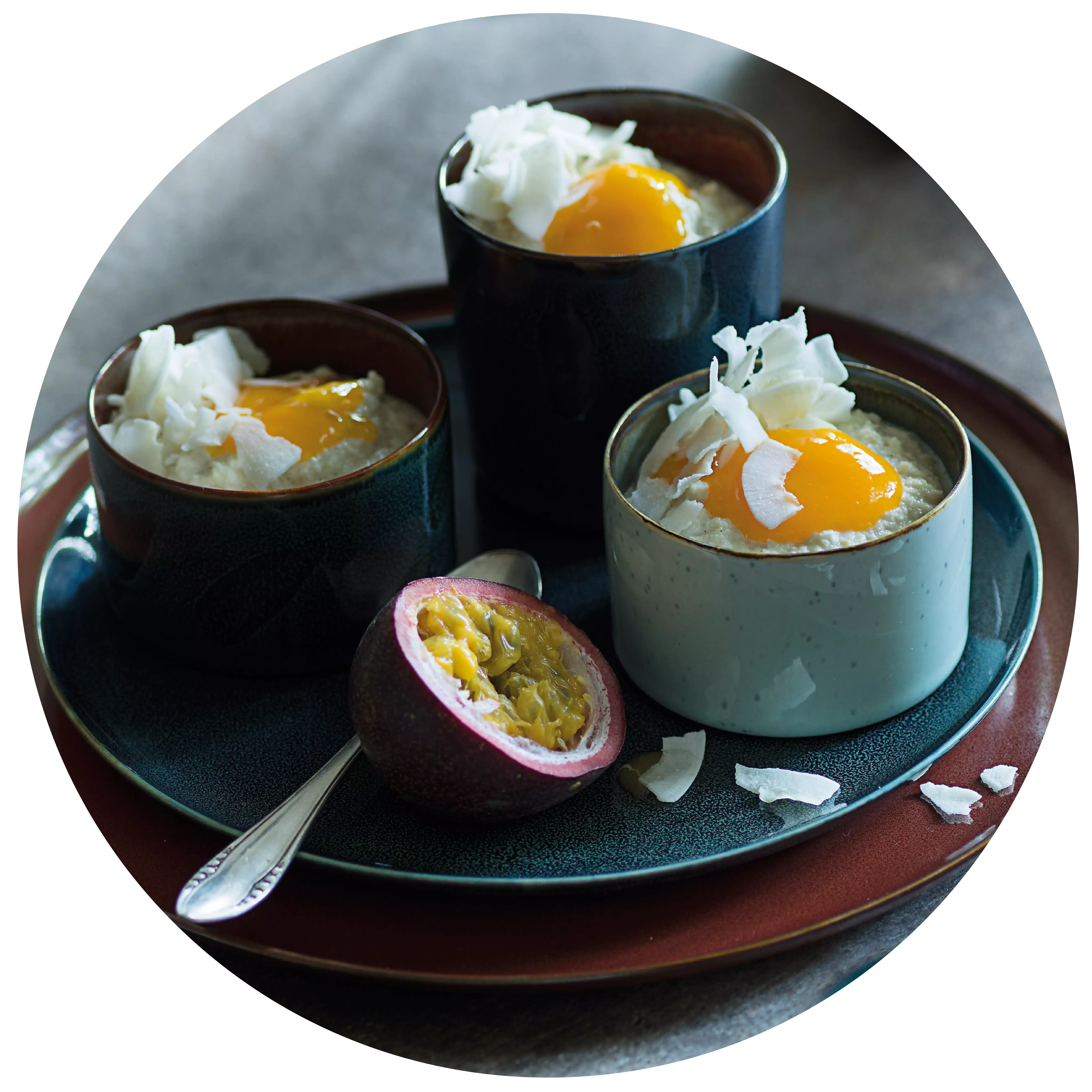
Events
-
Show
winetasting in our winery - cheese & wine
Mainz-Hechtsheim


